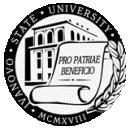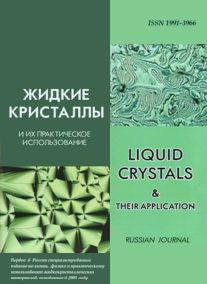|

|
Liquid Crystals and their Application
Russian Journal Zhidkie kristally i ikh prakticheskoe ispol'zovanie Жидкие кристаллы и их практическое использование |

|
|

|

|
|
|
Menu

|
|
|
|
|
Zhidk. krist. ikh prakt. ispol'z. = Liq. Cryst. and their Appl., 2016, 16 (4), 36—41.
DOI: 10.18083/LCAppl.2016.4.36 |

|
|
Mathematical Model of Boundary Lubrication Layer Formation from Water Emulsion Environment at Edge Cutting of Metals
|
E. V. Berezina1, A. V. Volkov1, V. A. Godlevskiy1, E. V. Kiseleva2
|
Author affiliations
1Ivanovo State University,
39 Ermak St., Ivanovo, 153025, Russia
E-mail: godl@yandex.ru
2Ivanovo State Power University,
34 Rabfakovskaya St., Ivanovo, 153003, Russia
E-mail: admin@tam.ispu.ru
|
|
Abstract
The work is devoted to the problem of efficiency of water – oil emulsions mechanical activation, applied at edge cutting of metals. It is known, that the lubricant layers, generated in conditions of limited access of external environment, have boundary mode and constructs like epitropic mesophases. But supramolecular structure and consequently tribological properties of this phase in conditions of limited access to the contact zone, strongly depend from the row of previous physicochemical processes. In the work the problem of the mathematical description of boundary lubricant layer formation process in case of edge cutting of metals in the widespread water – oil emulsional lubricooling media is solved. The fact, that preliminary dispersing of emulsions (mechano-activation), leading to decreasing of the disperse phase size, causes the essential decreasing in cutting force, has received the explanation. The description is based on the idea of microcapillary mechanism of lubrication action at edge cutting and the concept of «necessary kinetic condition for realization of lubricant action at cutting». The estimated calculations, made according to the developed model for conditions of typical mode of cutting, confirm the experimental data, received earlier. The offered formulas for calculation give the chance to predict the efficiency of mechanical emulsion lubricants activation, depending on both size distribution of small colloid particles and technological parameters of edge cutting process. It is offered to model the last stage of the process of boundary lubricant layer ordered structure formation by methods of molecular dynamics.
Keywords: lubricating process, epitropic mesophase, boundary lubricant layer, adsorption, metal cutting, emulsion, dispersing, mechano-activation, mathematical modeling
|
|
|
|
|
|




